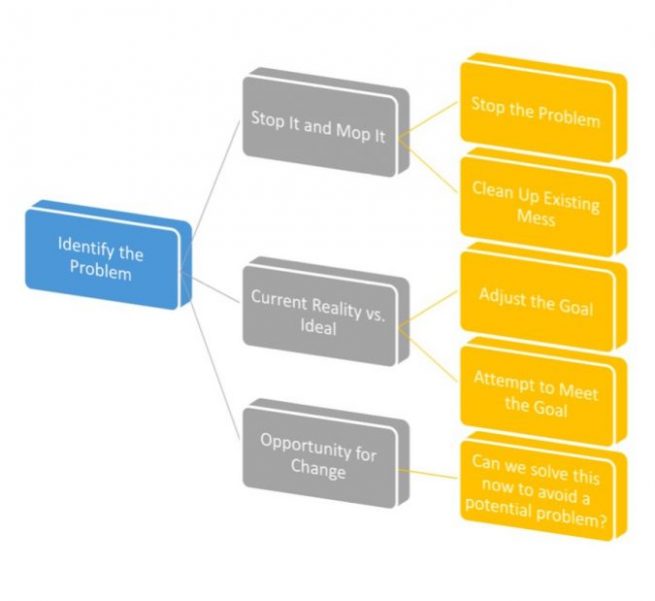Overview
I may have mentioned taking a few courses through UniversalClass.com. So far, I’ve found the Problem Solving 101 course invaluable as it explores the topic in depth, including the identification and allocation of resources, objective and subjective input, and evaluation of outcomes. Moreover, introduces three main categories for to consider when faced with problems in the workplace (or everyday life).
First Approach – Pretty Straightforward
The first category is referred to as the “stop it and mop it” scenario. In this situation, there is an event, behavior or condition that you need to stop from happening, as well as clean up the existing damage. Imagine that you are a landlord and your tenants are complaining about mice eating through the walls. To stop this, you hire an exterminator to find out where the mice are coming from and place baits or traps to catch them. To ‘mop it’, or clean it up, you have the exterminator locate likely areas existing mice might nest and place baits there as well. You also hire a contractor to come in and fix all the places the mice have chewed through. With these items in place, the problem should be resolved.
Second Approach – Some Concessions Are Made
The next situation employs the “current reality vs ideal” scenario. In this case, what is happening in the now does not match up with predetermined expectations or goals. To demonstrate, we’ll use student enrollment as an example. You currently have 250 students enrolled in your school but the Department of Education has budgeted you for 300 students. This means you are 50 students short of the goal. There are two ways to approach the issue and the one you chose depends heavily on which holds the most acceptable outcome:
- Option 1: Adjust the goal. Is it unlikely that you’ll get another 50 students? Is it possible to increase by 25 students instead? How will this affect your goals and budgets for the remainder of the school year? What about next year?
- Option 2: Attempt to meet the goal. While this seems like the obvious first choice, it may not be possible. In this example, your pool of students is inherently limited by things like zoning, number of students eligible, class sizes and competing schools. This means that even if you recruit all remaining students, you may still fall short. However, this option might be easier to implement when dealing with products or services, as you can increase production, hire more staff, adjust hours, etc.
Third Approach – Hard work for Lasting Payoff
The third approach to problem solving is the “opportunity for change” scenario. This is best applied to a situation where the problem is something with room for improvement. Perhaps you supervise a call center. You discover that employees spend an average of 5 minutes searching the company database for answers to commonly asked questions. While this might not directly translate into dollars lost, it does affect how many customers can be served. It can also have a negative impact on the way customers view your company. After all, how many of us have spent hours on the phone with the cable company trying to do something as simple as reset a router? This sort of issue, under the right management, can be turned into a learning experience for everyone. Determining whether staff needs better resources, guidance or training can improve or eliminate the problem altogether.
To summarize, there are three main ways to categorize and resolve problems. At the most basic level, each categorization requires identifying what the problem is and then determining what the anticipated outcome is. Approaching adverse situations in this manner can help you structure processes and procedures to avoid similar issues in the future.



